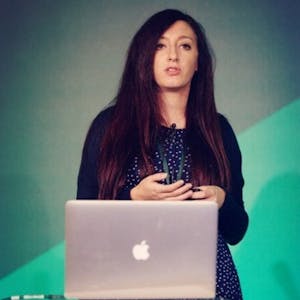245 min
Construyendo Aplicaciones Serverless en AWS con TypeScript
Workshop
Este masterclass te enseña los conceptos básicos del desarrollo de aplicaciones serverless con TypeScript. Comenzaremos con una función Lambda simple, configuraremos el proyecto y la infraestructura como código (AWS CDK) y aprenderemos cómo organizar, probar y depurar una aplicación serverless más compleja.
Tabla de contenidos: - Cómo configurar un proyecto serverless con TypeScript y CDK - Cómo escribir una función Lambda testeable con arquitectura hexagonal - Cómo conectar una función a una tabla DynamoDB - Cómo crear una API serverless - Cómo depurar y probar una función serverless - Cómo organizar y hacer crecer una aplicación serverless
Materiales mencionados en el masterclass:
https://excalidraw.com/#room=57b84e0df9bdb7ea5675,HYgVepLIpfxrK4EQNclQ9w
Blog de DynamoDB de Alex DeBrie: https://www.dynamodbguide.com/
Excelente libro para DynamoDB: https://www.dynamodbbook.com/
https://slobodan.me/workshops/nodecongress/prerequisites.html
Tabla de contenidos: - Cómo configurar un proyecto serverless con TypeScript y CDK - Cómo escribir una función Lambda testeable con arquitectura hexagonal - Cómo conectar una función a una tabla DynamoDB - Cómo crear una API serverless - Cómo depurar y probar una función serverless - Cómo organizar y hacer crecer una aplicación serverless
Materiales mencionados en el masterclass:
https://excalidraw.com/#room=57b84e0df9bdb7ea5675,HYgVepLIpfxrK4EQNclQ9w
Blog de DynamoDB de Alex DeBrie: https://www.dynamodbguide.com/
Excelente libro para DynamoDB: https://www.dynamodbbook.com/
https://slobodan.me/workshops/nodecongress/prerequisites.html




























